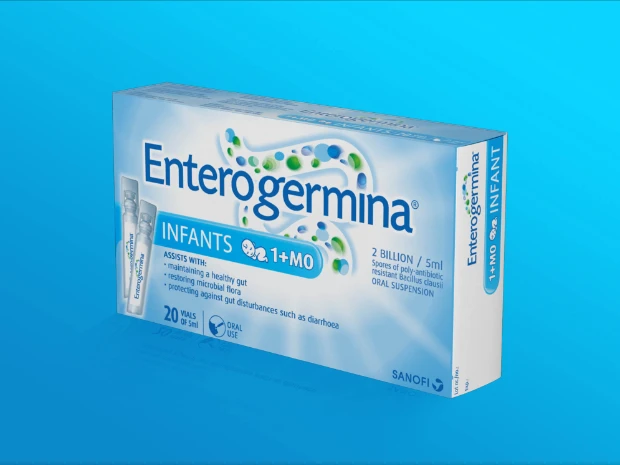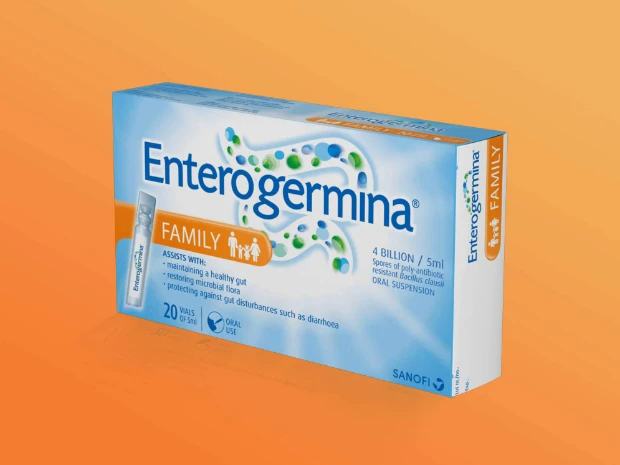
What are You Doing to Protect Your Gut from Antibiotics?
4 Min Read
Antibiotics are a very necessary part of life as humans navigate environments that have constantly fluctuating levels of both good and bad bacteria. When bad bacteria enter the body, antibiotics take on the mammoth task of fighting them off. In the process, antibiotics can affect the function of the intestinal immune system, the ability to resist infections, and the correct functioning of the metabolism (assimilation of nutrients, facilitating the processes of digestion, absorption and peristalsis). 1, 2
Abdominal pain and digestive difficulties are among the most frequent symptoms people experience after taking antibiotics. These difficulties may include diarrhoea, nausea, cramping and excessive gas, with some more severe digestive cases leading to dysbiosis.
Underlying these problems could be changes to the intestinal bacterial flora, which may have become unbalanced and therefore less able to provide the usual protective effects, as the levels of "good" bacteria have been reduced and the pathogenic ones are temporarily victorious. Probiotics are your best ally to help maintain a balance in this regard. Protection is better than a cure, and when these symptoms put us at risk for gut disorders, we need to take action. 2 ,3, 4
Let’s look at some common symptoms caused by antibiotic treatment
Diarrhoea or Constipation
When the healthy levels of intestinal flora in your gut have been disrupted by antibiotic therapy, it is normal for one’s bowels to either leak (diarrhoea), or to become stagnant (constipation). Both conditions can be painful but are easily managed. 5 6
Cramping and Bloating
Another two symptoms of an imbalance in the gut flora are abdominal pain and intestinal swelling. You might be able to avoid the onset of these by sticking to a very strict dosage and schedule when taking antibiotics. 7
Nausea
As your good bacteria of the microbiota are wiped out by the medicines, it’s not uncommon to experience nausea as a side effect. This may be in addition to one or more of the symptoms mentioned above. 8
Let’s take a look at what and what not to eat when undergoing antibiotic treatment
Eat more of these foods:
While you are taking antibiotics, it is good to follow a diet rich in fibre, vitamins and antioxidants, especially Vitamin C, which is found in many fruits and vegetables. It is always recommended that you choose a probiotic that has proven antibiotic resistance. Here’s everything you need to know: 9
Fibre
Rice, a simple and quick food to digest, contains complex carbohydrates that replenish energy and is digested without further straining the stomach, giving the illusion of fibre. In the intestine, rice also helps to block any episodes of “antibiotic” dysentery. Yoghurt with live or active cultures contains enzymes which can also help digestion. It is also a probiotic food, rich in micro-organisms that restore the bacterial flora. 10
Vitamins
Potatoes, carrots, fennel are foods that work to preserve vitamins and minerals, which is always useful when dealing with side effects from antibiotics. 11
Antioxidants
Asparagus and green tea are rich in Vitamin K. Bananas act effectively against any stomach acid and are astringent in the intestine, which helps when antibiotics cause real episodes of acute diarrhoea. Also, bananas have the characteristics of a natural supplement: they are very rich in potassium, as well as other vitamins and minerals. 12, 13, 14
Eat less of these foods:
In many cases, there may be interference between antibiotics and some foods. To avoid gastritis, acidity and dysentery, it is a good idea to avoid those foods that can have an irritating effect on the stomach walls and intestine. Let’s look at which ones are best avoided:
Dairy products including all cheeses. Fermenting dairy in the gut can cause dysentery and slow digestion. Skimmed yoghurt is an exception, as it contains probiotics and may help the gut. 15
Grapefruit and grapefruit juice as they can increase the circulation of the active substance in the antibiotics, which is equivalent to creating an overdose effect. 15
Chocolate, coffee, alcoholic beverages and carbonated soft drinks should be avoided. 16, 17
Foods rich in calcium and iron, such as dairy products, nuts and seafood. 18
Probiotics can help to protect the gut from antibiotics
Incorporating a probiotic into your routine during your antibiotic treatment gives you the upper hand in reducing the incidence of gut disorders before it has the chance to set in. This way, you’re covered even in the days following the end of your treatment cycle.
The characteristics that a probiotic must have in order to be considered “high caliber” (and therefore entail real benefits) must be faithful to the definition of "probiotic" according to the FAO (Organization for Food and Agriculture) and the WHO (World Health Organization). This definition was also adopted by the Italian Ministry of Health, and can be reported verbatim: "Probiotics are live and vital microorganisms that prove capable, once ingested in adequate quantities, to exercise beneficial functions for the body". The function of probiotics is to keep the intestinal flora in balance, thus preventing the "bad" bacteria from gaining the upper hand. 19
Our Products
Entrogermina's range of products works with the body to deliver effective solutions to various digestive conditions - the key to internal balance.
- Bacteria: the Good, the Bad, and the Ugly; NCHR, [quoted June 2021] https://www.center4research.org/bacteria-good-bad-ugly/
- Facing a new challenge: the adverse effects of antibiotics on gut microbiota and host immunity ; PMC, May 2019 [quoted June 2021] https://www.ncbi.nlm.nih.gov/pmc/articles/PMC6511407/
- Rare and more severe side effects; Medical News Today, August 2018 [quoted June 2021] https://www.medicalnewstoday.com/articles/322850#rare-and-more-severe-side-effects
- Antibiotics alter the gut microbiome and host health; Nature Portfolio, June 2019 [quoted June 2021] https://www.nature.com/articles/d42859-019-00019-x
- Antibiotic-associated diarrhea; Mayo Clinic, May 2019 [quoted June 2021] https://www.mayoclinic.org/diseases-conditions/antibiotic-associated-diarrhea/symptoms-causes/syc-20352231
- Taking Antibiotics? Be Sure to Protect your Digestive System!; PH, [quoted June 2021] https://www.phlabs.com/taking-antibiotics-be-sure-to-protect-your-digestive-system
- Pseudomembranous Colitis; Cleveland Clinic, [quoated June 2021] https://my.clevelandclinic.org/health/diseases/17718-pseudomembranous-colitis
- What should you eat while taking antibiotics?; Medical News Today, July 2018 [quoted June 2021] https://www.medicalnewstoday.com/articles/322374
- What You Should Eat During and After Antibiotics; Healthline, October 2017 [quoted June 2021] https://www.healthline.com/nutrition/what-to-eat-antibiotics
- What to Eat When Taking Antibiotic; Positive Health Wellness, January 2018 [quoted June 2021] https://www.positivehealthwellness.com/diet-nutrition/eat-taking-antibiotic/
- WELCOME TO THE FATIGUE REDUCTION DIET!; Medicine.umich.edu, [quoted June 2021] https://medicine.umich.edu/sites/default/files/content/downloads/Welcome%20to%20the%20Fatigue%20Reduction%20Diet%20Plan.pdf
- Food Sources of Vitamin K; HealthLinkBC, November 2018 [quoated June 2021] https://www.healthlinkbc.ca/healthy-eating/everyone/food-and-nutrition/vitamin-k
- 5 Top Foods to Stave Off Acid Reflux Symptoms; AARP, July 2017 [quoted June 2021] https://www.aarp.org/health/conditions-treatments/info-2017/foods-help-acid-reflux-fd.html
- Bananas 101: Nutrition Facts and Health Benefits; Healthline, May 2019 [quoted June 2021] https://www.healthline.com/nutrition/foods/bananas
- Using medication: Using antibiotics correctly and avoiding resistance;NCBI, November 2008 [quoted June 2021] https://www.ncbi.nlm.nih.gov/books/NBK361005/
- What Is Wrong With Drinking Caffeine While Taking Antibiotics?; LiveStrong.com, January 2020 [quoted June 2021] https://www.livestrong.com/article/519894-what-is-wrong-with-drinking-caffeine-while-taking-antibiotics/
- Interactions-Antibiotics; NHS, May 2013 [quoated June 2021] https://www.nhs.uk/conditions/antibiotics/interactions/
- Top 15 Calcium-Rich Foods (Many Are Non-Dairy); Healthline, July 2018 [quoted June 2021] https://www.healthline.com/nutrition/15-calcium-rich-foods
- Guidelines for the Evaluation of Probiotics in; FAO, April 2002 [quoted June 2021] https://www.who.int/foodsafety/fs_management/en/probiotic_guidelines.pdf

